Introduction to Yoga asanas for Back Pain
Back pain is something that a lot of us are familiar with, affecting countless individuals all over the globe. It could be because of our inactive routines, bad posture, or even intense physical workouts. But here’s the good news – yoga provides a natural and proven method to ease back pain and enhance our spinal health in general.
Understanding the Causes of Back Pain
“Before we dive into using yoga poses to help ease back pain, it’s really important to get a handle on what’s causing it in the first place. Things like sitting around too much, muscle imbalances, bad posture, and even injuries can all play a part in causing back pain. On top of that, stress and tension can really make the pain worse, making it harder to move around and get comfortable.”
Importance of Yoga Asanas for Back Pain Relief
Yoga is known far and wide for its healing properties, particularly when it comes to easing back pain. By blending soft stretches, muscle-building exercises, and mindful breathing practices, yoga serves as a natural remedy for easing muscle tightness, boosting flexibility, and fortifying the muscles that hold up our spines. Plus, making yoga a regular part of your routine can lead to a more relaxed state, less stress, and an all-around better quality of life.
Suggestions: Yoga for Stress Relief
How Yoga Helps Alleviate Back Pain
Yoga tackles back pain in a comprehensive way. It doesn’t just cover up the symptoms, it gets to the heart of the issue. By doing this, it enhances the alignment of your spine, loosens up tight muscles, and boosts blood circulation to the problematic areas. This not only aids in healing but also reduces pain. Plus, yoga helps you become more aware of your body. This awareness allows you to identify and change the bad habits that might be causing your back pain.
Best Yoga Asanas for Lower Back Pain
Child’s Pose (Balasana)
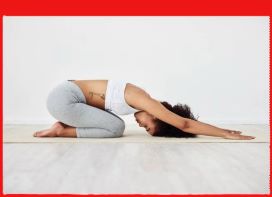
The Child’s Pose is a gentle stretch that targets the lower back, hips, and thighs, helping to alleviate any tension or discomfort you might be feeling. Here’s how you do it: start by getting down on your knees on your yoga mat, then lean back onto your heels. Once you’re comfortably settled, lower your forehead to the mat. You can either extend your arms out in front of you or let them rest by your sides.
Cat-Cow Stretch (Marjaryasana-Bitilasana)
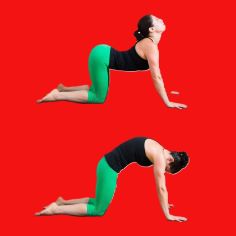
The Cat-Cow Stretch is a fun, active pose that really gets your spine moving and loosens it up. Start by getting down on your hands and knees. Now, take a deep breath in and curve your back, lifting your chest upwards (that’s the Cow Pose). After that, breathe out and let your spine curve inwards, tucking your chin towards your chest (that’s the Cat Pose).
Downward-Facing Dog (Adho Mukha Svanasana)
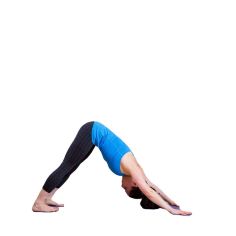
Downward-facing dog is an invigorating pose that stretches the entire back of the body, including the spine, hamstrings, and calves. Starting on your hands and knees, curl your toes and lift your hips toward the ceiling, forming an inverted V shape with your body..
Yoga Poses for Middle Back Pain
Cobra Pose (Bhujangasana)
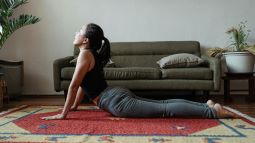
Cobra pose strengthens the middle and upper back muscles while increasing the extensibility and flexibility of the spine. Lie on your stomach, place your hands under your shoulders, press them to the floor, lift your chest and look up.
Sphinx Pose (Salamba Bhujangasana)

Sphinx Pose is a gentle backbend that stretches the spine, chest and abdomen, releasing tension and promoting relaxation. Lie on your stomach, rest on your forearms, elbows under your shoulders and slowly raise your chest.
Yoga for Low Back Pain
Bridge Pose (Setu Bandhasana)
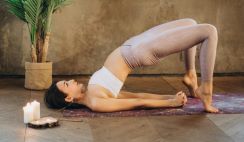
Bridge pose strengthens your back, glutes, and hamstrings while improving the flexibility and mobility of your spine. Lie on your back, bend your knees and press your feet into the mat as you lift your hips toward the ceiling and tighten your hips and thighs.
Knee-to-Chest Pose (Apanasana)
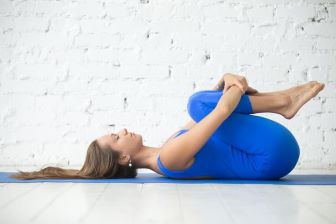
The knee-to-chest pose gently stretches the lower back and hips, releases tension and improves blood supply to the lumbar spine. Lie on your back, pull your knees to your chest and gently move them to the side, massaging your lower back.
Yoga Poses for Upper Back
Thread the Needle Pose (Parsva Balasana)
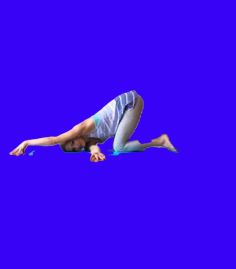
The needle and thread pose reduces tension in the upper back, shoulders and neck while increasing spinal mobility. Get on your hands and knees, place your right arm under your left, lower your right shoulder and ear toward the floor, and twist your torso slightly.
Seated Forward Bend (Paschimottanasana)

The seated forward bend stretches the entire back of the body, including the spine, hamstrings and calves, promoting relaxation and de-stressing. Sit on a mat with your legs extended, inhale to lengthen your spine, then exhale as you bend forward from the waist and reach for your feet.
Improving Back Flexibility through Yoga
Extended Triangle Pose (Utthita Trikonasana)
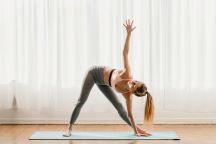
The stretched triangle pose strengthens and stretches your back, legs, and upper body and improves spinal flexibility and alignment. Start with your feet spread, right foot facing outward, and arms parallel to the floor. Reach your right leg with your right hand and look up while reaching your left hand above your head.
Standing Forward Bend (Uttanasana)
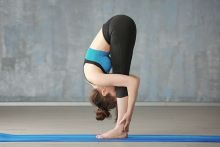
Forward bends release tension throughout the back of the body, including the spine, hamstrings and calves, while calming the mind and relieving stress. With your feet shoulder-width apart, bend forward from your hips and touch your toes or shins, lengthening your spine and bending your knees slightly if necessary.
Precautions and Tips for Practicing Yoga for Back Pain
When practicing yoga for back pain relief, it’s important to listen to your body and not push your limits. Start slowly, focusing on proper coordination and conscious breathing, and gradually increase the intensity and duration of your exercise. If you already have a back condition or injury, consult a doctor before starting a new exercise program. Additionally, consider taking a class led by an experienced yoga instructor who can provide customized instruction and modifications to suit your needs.
Incorporating Yoga into Your Daily Routine
To experience the full benefits of yoga for back pain relief, aim to incorporate a regular practice into your daily routine. Whether it’s a brief session in the morning to awaken your body and mind or a relaxing practice before bed to unwind and release tension, find a time that works for you. Remember that consistency is key, so commit to making yoga a priority and reap the rewards of improved spinal health and overall well-being.
Conclusion
Yoga offers a holistic approach to treating back pain that takes into account both the physical and psychological aspects of the condition. By practicing different yoga asanas that target different areas of your back, you can reduce tension, increase flexibility, and strengthen the muscles that support your spine. Additionally, yoga promotes relaxation, reduces stress, and improves overall quality of life, making it a valuable tool for treating and preventing back pain.